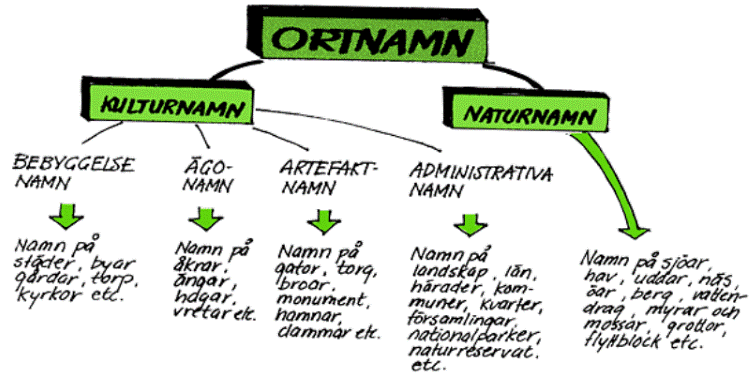Contents of this page may be automatically translated, we take no responsibility for the accuracy of the translation. Feel free to contact our customer support centre if you have any questions.

The study of place-names includes names of geographical habitats, such as lakes, mountains (nature names) and towns, villages, streets, farming areas and buildings (settlement names or culture names).
It can apply to names that are known by many, such as Vänern, Kinnekulle and Gustav Adolfs torg, or names that are only used in a limited area, e.g. Stenbäcken and Norrgärdet.

The concept of place-names is defined as follows
The term place name is defined as follows:
Place names are, during a certain time and in a certain circle of people, a unique name for a specific geographical locality.
The definition may not say much about the real role and meaning of the names. In fact, place names are our most important aids when we have to orientate ourselves in our surroundings. Where there are people there are also place names.
The role of place names in society
The main task of place names is to act as an orientation tool for communication between people, but they also play a big role in people's sense of identity and anchoring in life.
The names are often reminiscent of a living past and contribute to creating a sense of home and security. The place names form the intangible part of the cultural landscape.
A change in a place name can be experienced as a big problem, not only on a practical level, but also on a personal and emotional level. To counteract this, we want to spread knowledge and awareness about the role of place names in society.

